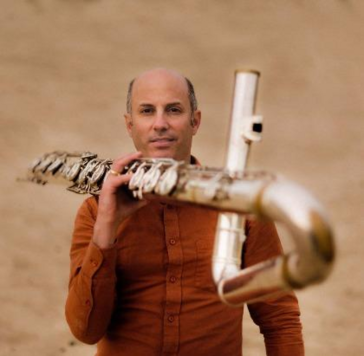When preparing students for the industry’s global context, publishing degrees aim to provide them with experience of cooperating and doing business with colleagues internationally. In order to achieve this, Oxford Brookes University and Amsterdam University of Applied Sciences have designed a module on trading in translation rights that gives students both a theoretical framework and real-world insights into book fairs and intercultural collaboration.In this module, students of both universities work collaboratively in a game that simulates the trading of intellectual property rights at an international event designed to resemble a major book fair. They team up in international groups of five or six students that each represent a publishing company in order to prepare for and to participate in an event called the Oxdam Book Fair. Preparation for the fair involves the development of plans and appropriate materials to sell translation rights for the company’s titles and to buy rights to titles which fit the company’s profile and strategy. During the event students partake in several rounds of rights trading activities, including pitching, strategy meetings, making offers, and networking.In this proposed paper, that contributes to the best practices-strand of the conference, lecturers of Oxford Brookes University and Amsterdam University of Applied Sciences will provide a ‘behind the scenes’-look at this collaborative module. They will talk about the simulation game that is the core of the module, provide background on the theoretical framework, address educational design challenges they encountered, and share outcomes of the collaborative module.
MULTIFILE

Het RAAK-MKB project "(G)een Moer Aan" heeft zich gericht op het ontwerpen van een veilige en effectieve ondersteuning van een cobot in een productieomgeving. De focus is hierbij gelegd op productiehandelingen die in veel sectoren voorkomen en die relatief veel arbeidstijd kosten, zoals het indraaien van moeren en bouten in een object. Binnen het project is veel kennis opgedaan dit heeft geresulteerd in gripperontwerpen die in staat zijn een bout in een flens te draaien. Daarnaast is kennis gegeneerd van vision technieken om gaten e.d. te detecteren, en het meenemen van (beleefde) veiligheid in het ontwerp van een cobot systeem. Deze nieuw opgedane kennis is erg bruikbaar voor zowel de beroepspraktijk als voor de studenten in het onderwijs. Dat maakt het relevant voor (her)gebruik middels het nieuwe open-acces e-learning platform van Fontys: Open Learning Labs. Door trainingsmateriaal te ontwikkelen dat betrekking heeft op onder andere het aspect veilig ontwerpen, worden toekomstige engineers (de studenten) en zittend personeel bij bedrijven bekend met nieuwe technieken die toepasbaar zijn in diverse sectoren waar met robots gewerkt wordt. Het doel van deze Top-up aanvraag is tweeledig: 1) Het vergroten van de zichtbaarheid van de resultaten uit het initiële RAAK-project, zowel richting onderwijs, onderzoek en beroepspraktijk. 2) Het realiseren van trainingsmateriaal t.b.v. het rekening houden met en veilig ontwerpen van cobotsystemen. Door o.a. kennis aan te dragen omtrent het doen van een correcte risico analyse van het proces. Dit zal bij toekenning stapsgewijs uitgevoerd worden: 1. Definiëren inhoud lesmodules en bijbehorende didactische werkvormen 2. Realisatie PR- & instructievideo's en onderwijsopdrachten 3. Realisatie E-learning lesmodule Dit alles gekoppeld aan het open-acces e-learning platform Open Learning Labs van Fontys.
Students in Higher Music Education (HME) are not facilitated to develop both their artistic and academic musical competences. Conservatoires (professional education, or ‘HBO’) traditionally foster the development of musical craftsmanship, while university musicology departments (academic education, or ‘WO’) promote broader perspectives on music’s place in society. All the while, music professionals are increasingly required to combine musical and scholarly knowledge. Indeed, musicianship is more than performance, and musicology more than reflection—a robust musical practice requires people who are versed in both domains. It’s time our education mirrors this blended profession. This proposal entails collaborative projects between a conservatory and a university in two cities where musical performance and musicology equally thrive: Amsterdam (Conservatory and University of Amsterdam) and Utrecht (HKU Utrechts Conservatorium and Utrecht University). Each project will pilot a joint program of study, combining existing modules with newly developed ones. The feasibility of joint degrees will be explored: a combined bachelor’s degree in Amsterdam; and a combined master’s degree in Utrecht. The full innovation process will be translated to a transferable infrastructural model. For 125 students it will fuse praxis-based musical knowledge and skills, practice-led research and academic training. Beyond this, the partners will also use the Comenius funds as a springboard for collaboration between the two cities to enrich their respective BA and MA programs. In the end, the programme will diversify the educational possibilities for students of music in the Netherlands, and thereby increase their professional opportunities in today’s job market.

Update 09 22: de generieke blackboardmodule is afgerond in juni 22 en wordt nu bij Bedrijfskunde (AD) en Technische Bedrijfskunde (Minor Slim Produceren) gebruikt en getest. Deze gebruikerservaringen worden meegenomen, mogelijke aanpassingen worden gedaan. Het project loopt volgens planning. Er blijkt geen factuur te zijn gestuurd in het vorig studiejaar (21 22), dit blijkt niet meer mogelijk. Voor dit project is subsidie uit het Strategisch Fonds toegekend door drie instituten: Instituut voor Bedrijfskunde, Academie voor Gezondheidsstudies en Engineering. Looptijd: september 2021 - juni 2023.Er wordt een generieke Blackboard module ontwikkeld voor het gebruik van de A3+ methode door studenten (gebruik) en docenten (begeleiding). Het is een onderzoeksmethode om procesproblemen te analyseren en op te lossen op een iteratieve en sequentiële wijze. De beoogde impact: Met behulp van de onlineversie van de A3+ methode wordt een nieuwe structuur gecreëerd voor de begeleiding van studenten bij de uitvoering van hun onderzoeksopdrachten. Kenmerk van deze nieuwe structuur is haar flexibele karakter met hoogfrequente online interactie en feedback